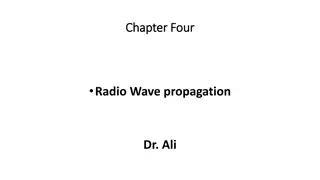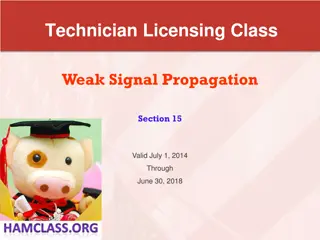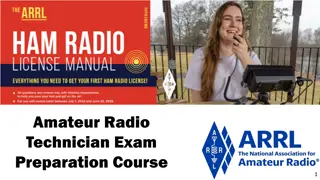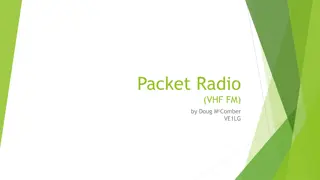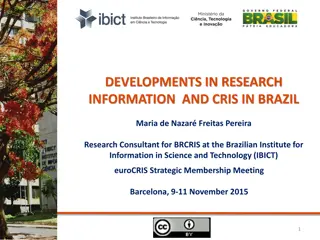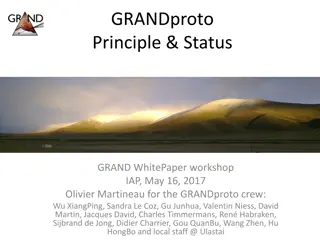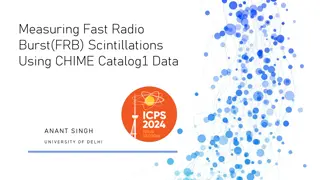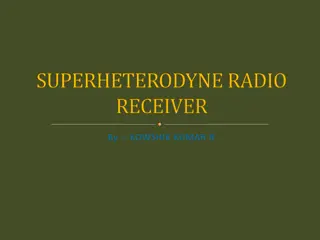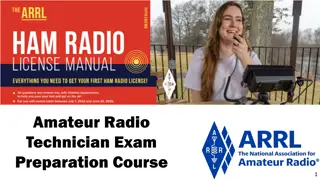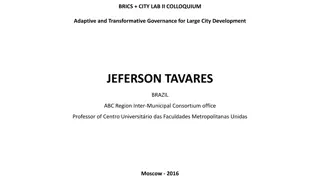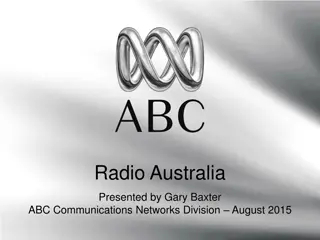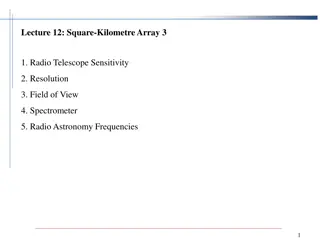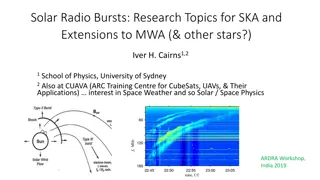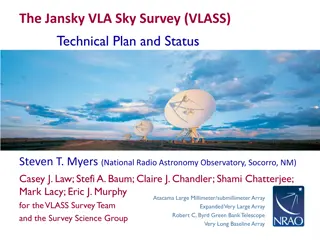Community Radio in Brazil: Struggles and History
Community radio in Brazil faces challenges due to high media ownership concentration. Despite historical significance, lack of legal recognition in the past hindered its growth. The medium aims to mobilize citizens and promote alternative journalism, striving for democracy and citizen participation.
Download Presentation

Please find below an Image/Link to download the presentation.
The content on the website is provided AS IS for your information and personal use only. It may not be sold, licensed, or shared on other websites without obtaining consent from the author.If you encounter any issues during the download, it is possible that the publisher has removed the file from their server.
You are allowed to download the files provided on this website for personal or commercial use, subject to the condition that they are used lawfully. All files are the property of their respective owners.
The content on the website is provided AS IS for your information and personal use only. It may not be sold, licensed, or shared on other websites without obtaining consent from the author.
E N D
Presentation Transcript
Struggling for the right to communicate: Experiences from community radio in Brazil Raquel Paiva Jo o Paulo Malerba Universidade Federal do Rio de Janeiro - Brazil
BRAZILIAN MEDIA OVERVIEW - As with many Latin-american countries Brazil has high concentration of media ownership: for example, one media corporation (Globo) concentrates 70% of the TV market; - Over a decade of left government hasn't addressed the issue; - Unbalanced news coverage on political issues: Brazil faces a disruption within democracy nowadays; - In this scenario, community media struggles to influence public opinion with a alternative journalism .
COMMUNITY MEDIA OVERVIEW - Latin-american early examples (1940-60): Sutatenza (Colombia) and Miner s radio stations (Bol via); - Principles: access; participation; self-management (Lewis, 1993) runned by ordinary people and/or non-profit organizations; its programming emphasize interests of local communities (geographic, ethnic, cultural and common interests); - Power of mobilisation: what allows us to define a medium as community is not its capacity to provide a service but its intention, its clear aim to mobilise as connected to exercising citizenship (Paiva, 1998, p. 160). .
BRAZILIAN COMMUNITY RADIO ~ THE HISTORICAL BACKGROUND ~ - Community radio principles on the very first stablished radio in Brazil: R dio Sociedade do Rio de Janeiro (1923) Radio is the school of those who don t have school, it is the newspaper of those who can t read, it s the teacher of those who cannot go to school . Edgard Roquette-Pinto
BRAZILIAN COMMUNITY RADIO ~ THE HISTORICAL BACKGROUND ~ - Historical importance of CR on the struggle for democracy and citizen participation in all Latin America countries, including Brazil. - Three lineages: * from the practice of evangelization and social mobilization of the Catholic Church via radio; * inspired by European free radio stations; * CR model of AMARC.
BRAZILIAN COMMUNITY RADIO ~ THE REGULATORY FRAMEWORK ~ - 1970-1980: no legal recognition: radio station were closed down and their staff prosecuted; - 1990s: several associations and national, regional and international organizations supporting community radios; - 1996: 8 bills aiming to regulate community broadcasting in Brazil; - Law 9612/1998: Neoliberal government (Executive); 70% of the members of the parliamentary committee were owners or had indirect interests on commercial radio and TV (Legislature); criminalization remains (Judiciary)
BRAZILIAN COMMUNITY RADIO ~ THE REGULATORY FRAMEWORK ~ - There are 4.724 licensed CRs covering 3.935 Brazilian cities - Comparative research on community broadcasting regulation from all South-American countries: Brazil has the most restrictive law * legal definition; * overall power restriction; * reservation of frequency; * possibilities for financial sustainability; * license length.
BRAZILIAN COMMUNITY RADIO ~ THE REGULATORY FRAMEWORK ~ Legal definition and power restriction - radio directors must live within one kilometre radius from the station; - designed to meet only communities of a neighbourhood, a village or small town; - excludes ethno-linguistic communities (indigenous, quilombola, migrants etc.), large geographic communities (as slums) and so-called interest communities; - power limited to 25 watts - FM (the typical modulation for local transmissions)
BRAZILIAN COMMUNITY RADIO ~ THE REGULATORY FRAMEWORK ~ - Violation of the principle of universality in the right to communicate: previous restrictions clearly configure an indirect restriction to the freedom of expression; - The Consultative Statement 5/85 from the Human Rights Inter-American Court maintains that media should be virtually open to all without discrimination, more precisely, there shall not be individuals or groups a priori excluded from the access to such media; this demands the adequate conditions regarding these media, so that in practice, they must be true instruments of freedom of expression and not of its restriction. (OAS)
BRAZILIAN COMMUNITY RADIO ~ THE REGULATORY FRAMEWORK ~ Beadledom and closures - Highly bureaucratic and slow mechanism of licensing; - Over a period of four years the Ministry of Communication accumulated 11,842 cases pending analysis, only managing to cope with 30% of them; - The waiting time for a license can take up to 10 years or more; - The other side of the beadledown is the closure of unlicensed radio stations: (2002-2015) 13.247 closures (average of almost 3 per day) and 3.765 licenses (average of less than 1 per day)
BRAZILIAN COMMUNITY RADIO ~ WAITING TIME FOR A LICENSE~ Less than 1 year 4% Between 1 and 3 years 8% 56% take longer than 5 years 10 years or more 24% Between 3 and 5 years 32% Between 7 and 10 years 14% Between 5 and 7 years 18% Malerba, 2016
BRAZILIAN COMMUNITY RADIO ~ CR CLOSURES (2002-2015) (OFFICIAL NUMBERS) ~ Year 2002 2003 2004 2005 2006 2007 2008 2009 2010 2011 2012 2013 2014 2015 Total Total 1105 1217 971 1543 1602 1342 1252 881 940 692 654 426 353 269 13247 25 166 395 301 820 668 502 495 385 449 283 260 177 150 98 5149
BRAZILIAN COMMUNITY RADIO ~ THE REGULATORY FRAMEWORK ~ Beadledom - The Joint Declaration on Diversity of Broadcasting from 2007, signed by the four special rapporteurships on freedom of expression (UN, OAS, OSCE e ACHPR) states that community radio broadcasting should be recognized in legislation as a differentiated form of media, benefiting from equal and simple licensing (LIGABO et al, 2007). )
BRAZILIAN COMMUNITY RADIO ~ ONLINE RADIO AND SOCIAL MEDIA ~ Three transformations affecting CRs * digitalisation of the radio: possibilities (more radio spectrum space) and risks (costs of transition and very low power) * podcasts: radio spot campaigns (health, worker s right etc.) and interchange of local news via internet (Radiotube) * online radio: possibility of reaching wider audiences and also an alternative for unlicensed CRs
BRAZILIAN COMMUNITY RADIO ~ CRS BROADCASTING ONLINE ~ No and we are not interested 4% No but we would like to 20% Yes, we do 76% Malerba, 2016
BRAZILIAN COMMUNITY RADIO ~ ONLINE CR AUDIENCE ~ 50% 45% 40% 35% 30% 25% 20% 15% 10% 5% 0% Don t no Less than 11 11 to 50 51 to 100 More than 101 Inaccurate Malerba, 2016
BRAZILIAN COMMUNITY RADIO ~ CRS USE OF PODCAST ~ Yes 33% No 67% Malerba, 2016
BRAZILIAN COMMUNITY RADIO ~ CHALLENGES TO CRS ~ * autonomy from political control : Boas and Hildago (2011) demonstrate that in cases where there was a licensed radio station with ties to a candidate, it raised its share of the votes by 17% and the probability of winning by 28%. * increase participation: citizen participation on community radio rarely involves participation in decision making
BRAZILIAN COMMUNITY RADIO ~ HOW COMMUNITY GET INVOLVED? ~ 100% 90% 80% 70% 60% 50% 40% 30% 20% 10% 0% Interviews, debates etc. Requesting songs Decision making meetings They don t Malerba, 2016
BRAZILIAN COMMUNITY RADIO ~ CHALLENGES TO CRS ~ * funding: Law 9.612 prohibits advertising on community radio programming Nilson Jos dos Santos - community radio Esperan a FM, a quilombo station in the town of Queimada Nova (state of Piau , North-West Brazil): Money is a problem, we can t survive on what the station brings in. For me to do a report in the countryside, for example, it costs time and money on transport (Santos, 2015).
BRAZILIAN COMMUNITY RADIO ~ CONCLUSIONS ~ Brazilian CRs: - remain at the centre of democratization ; - key vehicle for alternative voices, for deliberative talk and dialogue; - space for the rise of civic-journalism ; - contribute for a polyphony of voices and to break down barriers between message producers and consumers; - new ICTs: an opportunity to grow, to strengthen relationships with their audiences, and to build communities in ways that are not bound by geography .
THANK YOU Raquel Paiva raquelpaiv@gmail.com Jo o Paulo Malerba joaopaulorj@yahoo.com.br
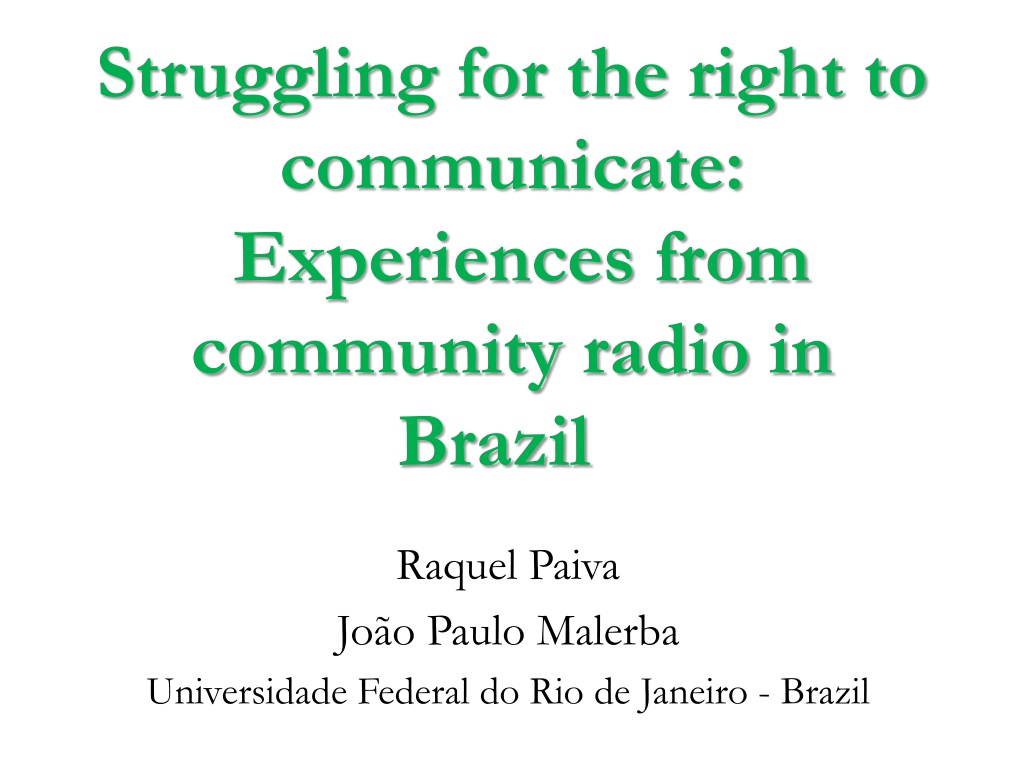


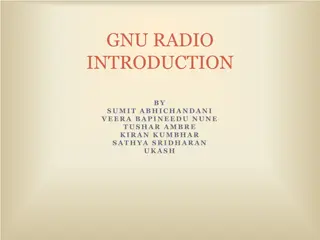
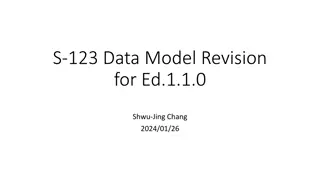
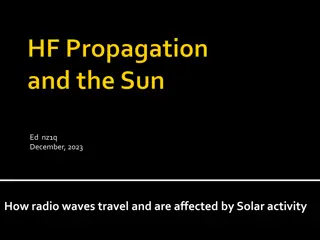
![Halal_Chicken_from_Brazil-_Ensuring_Quality_and_Authenticity[1]](/thumb/86918/halal-chicken-from-brazil-ensuring-quality-and-authenticity-1.jpg)
